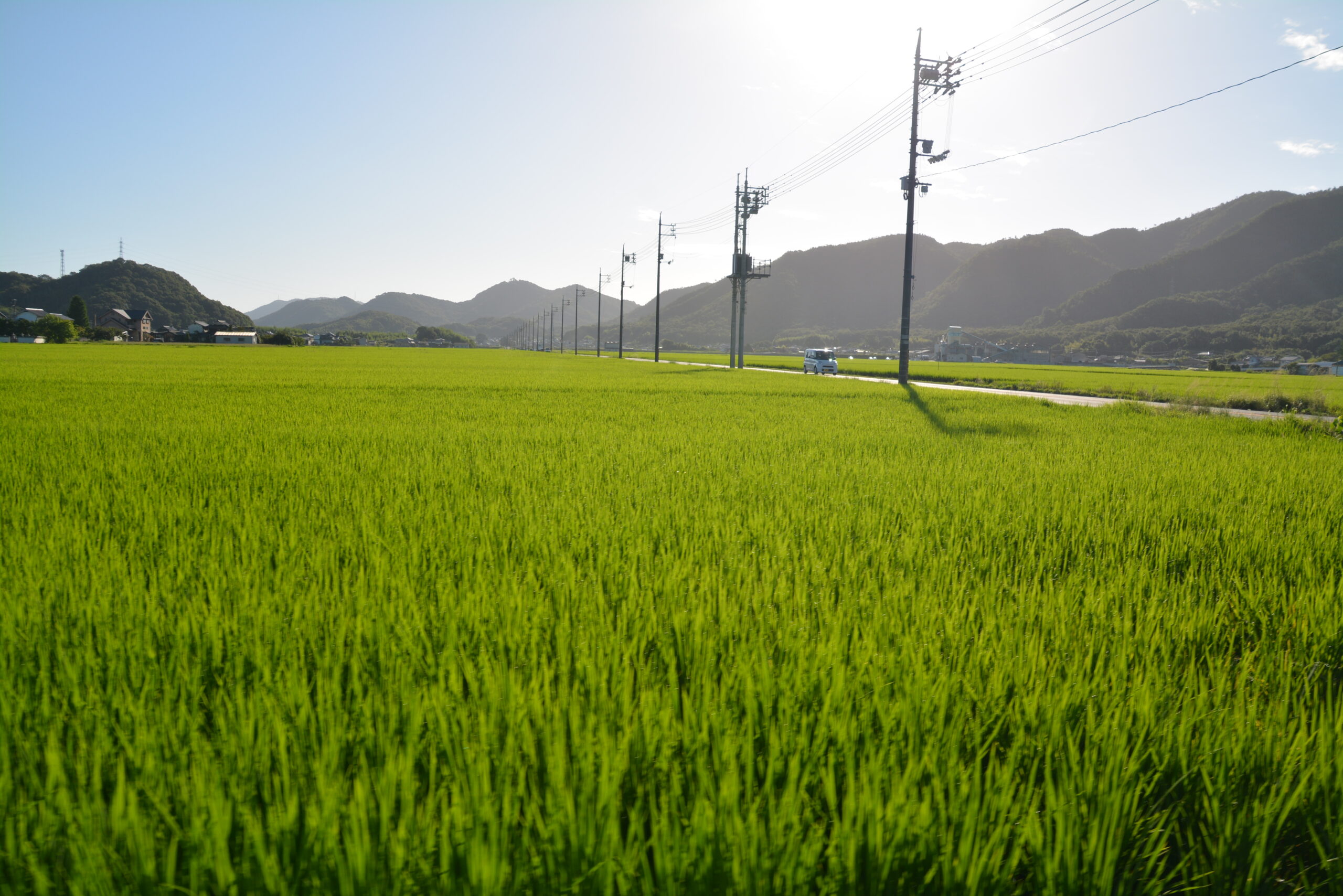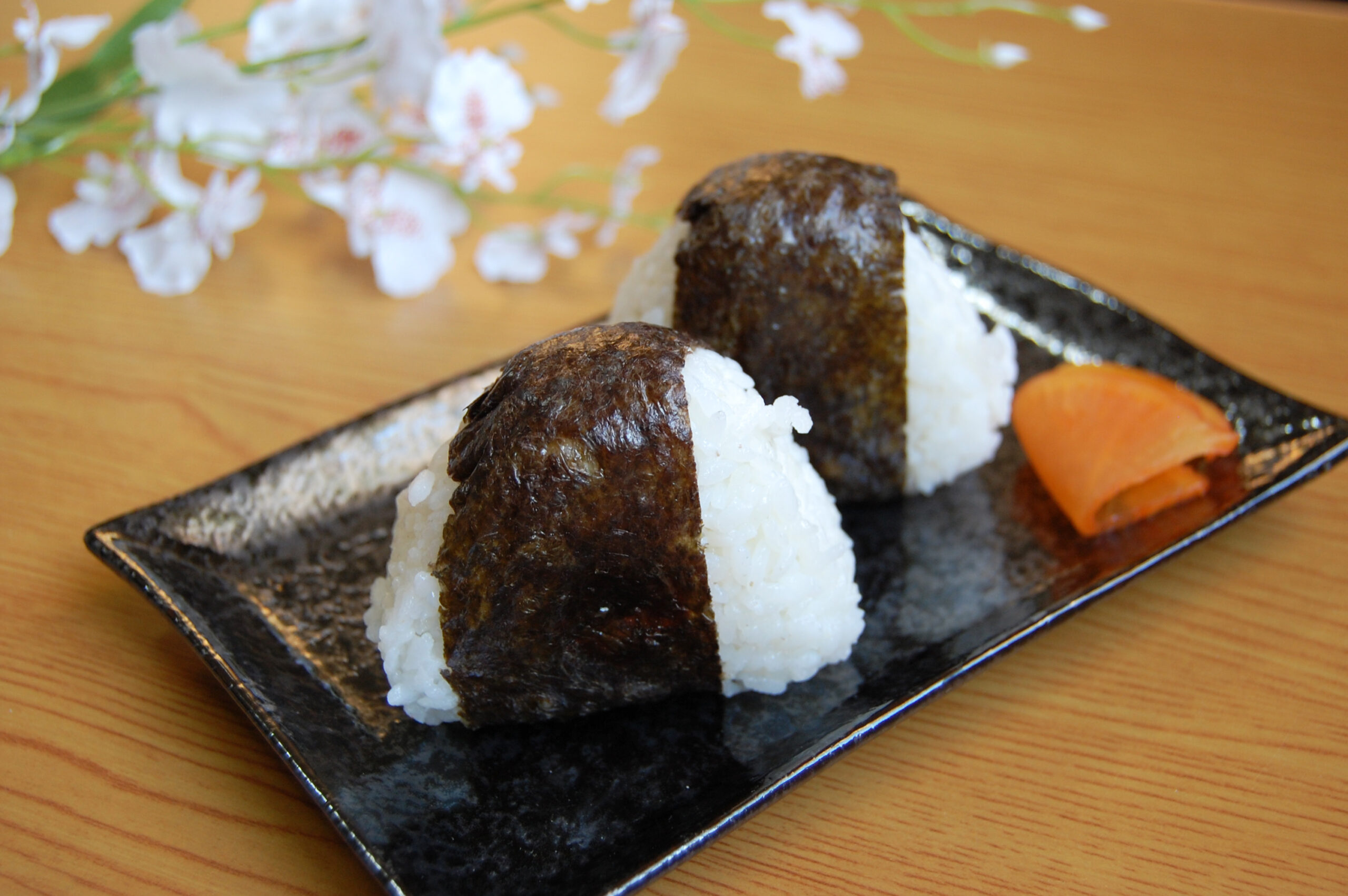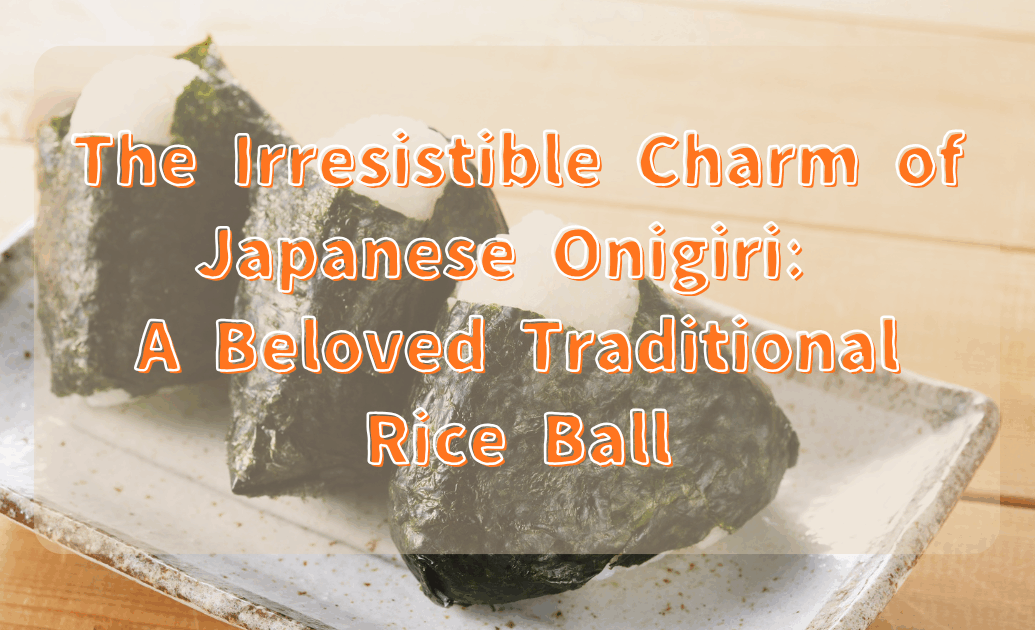What Is Onigiri?
Onigiri, also known as Japanese rice balls, are one of Japan’s most iconic and beloved comfort foods. These simple yet flavorful creations consist of steamed rice shaped into triangles, circles, or cylinders, often wrapped in nori (seaweed). While they might look modest, onigiri are deeply rooted in Japanese culture — a symbol of home-cooked warmth, convenience, and nostalgia.
A Bite of History

The history of onigiri stretches back over a thousand years. In Japan’s Heian period (794–1185), rice balls were carried as portable meals for travelers and warriors. Unlike sushi, which uses vinegared rice, onigiri are made from plain rice, sometimes lightly salted, making them easy to preserve and transport. Even today, they remain a staple in bento boxes and convenience stores across Japan.
Popular Onigiri Fillings
One of the charms of onigiri is its incredible variety. Inside each rice ball lies a surprise — a burst of flavor that complements the soft, fluffy rice. Some of the most popular fillings include:
- Umeboshi (Pickled Plum): Tangy and salty, a true classic.
- Salmon (Sake): Grilled or salted salmon flakes for a savory bite.
- Tuna Mayo: A creamy, modern favorite among all ages.
- Konbu (Kelp): Seasoned seaweed that adds umami depth.
- Tarako (Cod Roe): Slightly spicy and full of rich flavor.
Each region in Japan also has its own local specialty onigiri, using unique ingredients that reflect regional tastes and traditions.
Modern Onigiri Culture
In modern Japan, onigiri are available everywhere — from high-end restaurants to 24-hour convenience stores (konbini). Many stores offer seasonal or limited-edition flavors, often inspired by local ingredients. Recently, onigiri cafés and onigiri specialty shops have gained popularity, offering freshly made rice balls with gourmet fillings and artisanal presentation.
Onigiri are also beloved for their simplicity and portability. Whether as a quick breakfast, picnic snack, or a hiking meal, they fit perfectly into Japan’s fast-paced yet mindful lifestyle.
How to Make Onigiri at Home
Making onigiri is surprisingly easy. All you need is freshly cooked rice, your favorite filling, and salt for flavor. Gently shape the rice with your hands (or a mold), tuck in the filling, and wrap it in nori. For extra flavor, sprinkle sesame seeds or furikake (rice seasoning) on top.

Why You’ll Love Onigiri
Onigiri represents the heart of Japanese home cooking — simple, wholesome, and full of love. Each rice ball tells a story: of tradition, family, and the Japanese appreciation for balance and beauty in everyday life.
So next time you visit Japan, don’t miss the chance to try authentic Japanese onigiri. Whether you grab one from a konbini or enjoy it fresh from a local shop, you’ll discover why this humble rice ball continues to capture hearts around the world.

